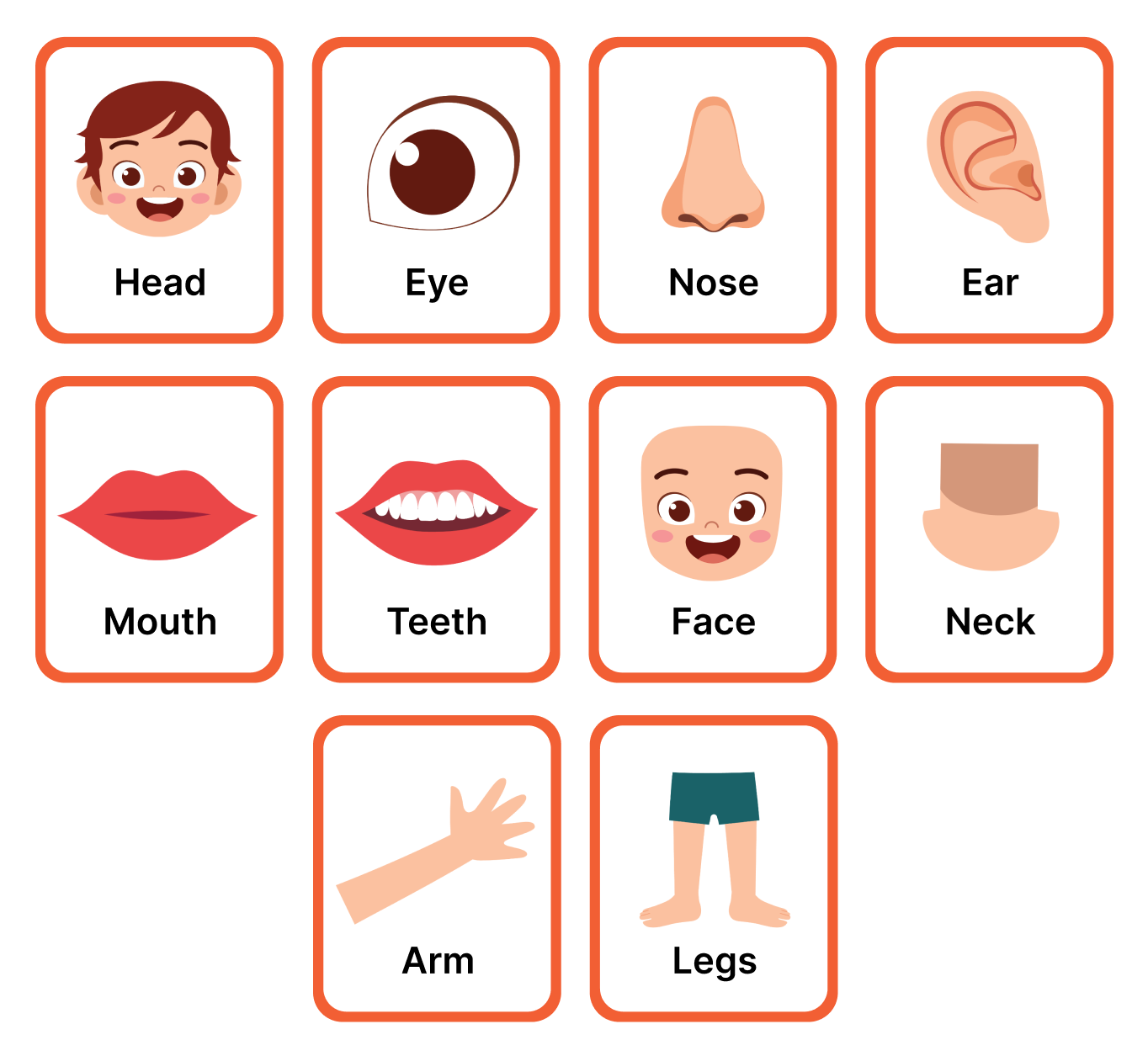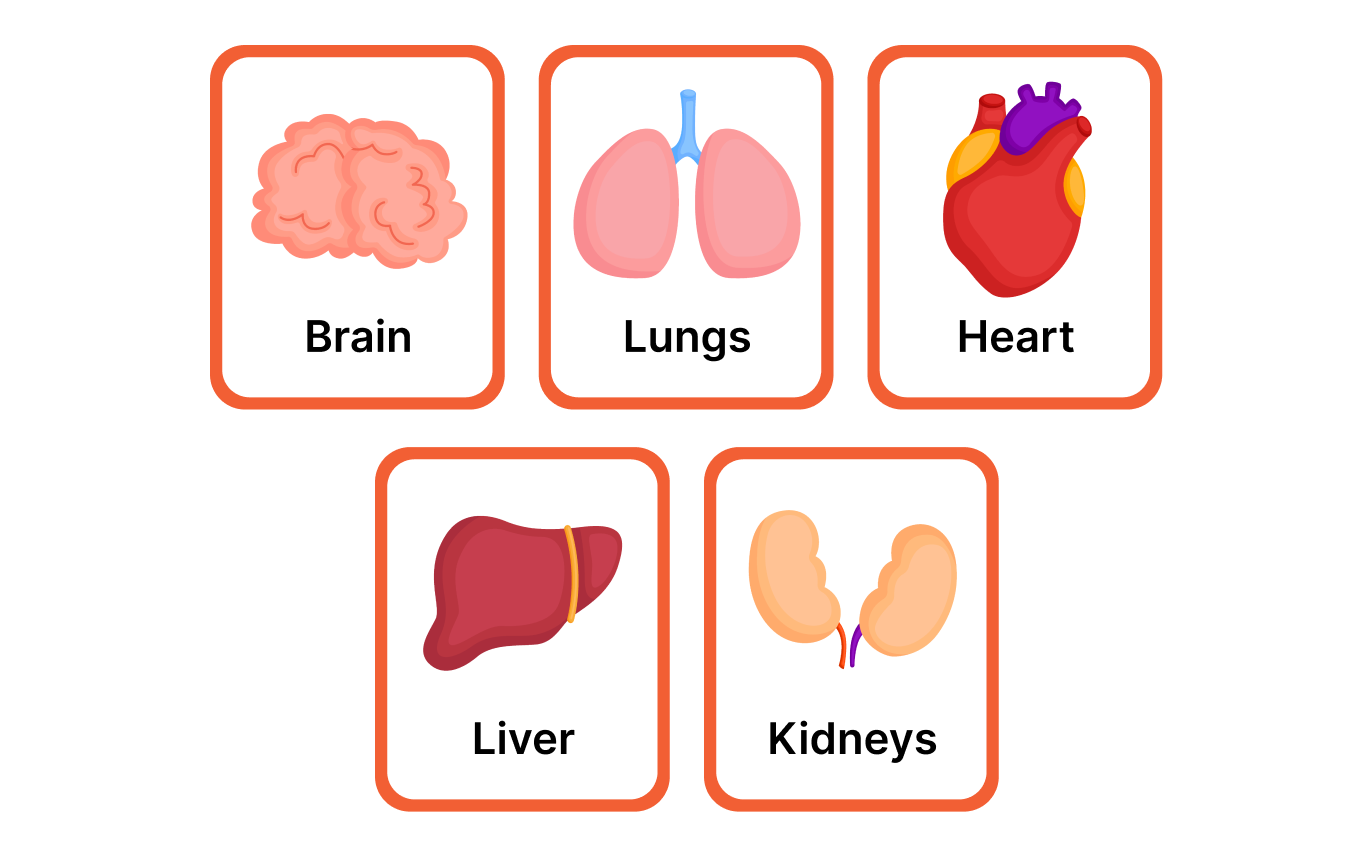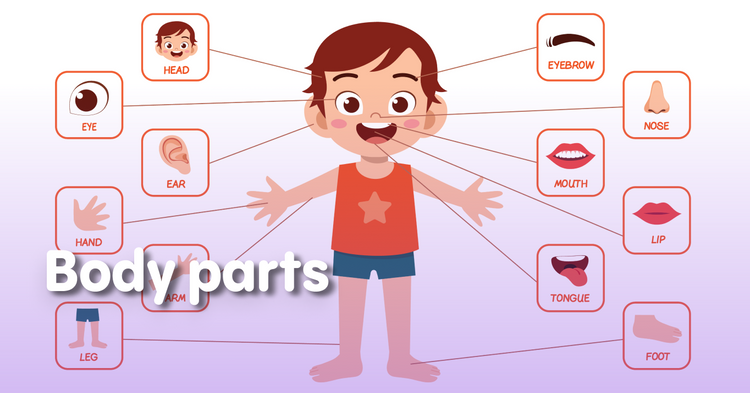Parts of the Body, Organs by Example in English, Vocabulary
Before we jump into exercises and interactive activities, it is essential to brush up on some basic vocabulary related to body parts and organs in the English language. Having a good understanding of this vocabulary will help you communicate effectively with doctors and medical professionals, as well as allow you to express any concerns or symptoms related to your own body in a precise manner.
Learning the vocabulary related to body parts and organs in English is essential for effective communication with medical professionals and expressing one's concerns related to health issues accurately. In this article, we will explore the basic and advanced vocabulary for body parts and organs, along with three vocabulary lists suitable for different levels of English learners.
Beginner Level (0 - A1)
If your child is a beginner in learning English, mastering the basic vocabulary related to body parts is crucial. Here are ten essential words that they should know to communicate about the human body effectively:
 These words represent the fundamental vocabulary necessary for communication about the human body, which will enable you to lay the foundation for more complex terminology in the future.
These words represent the fundamental vocabulary necessary for communication about the human body, which will enable you to lay the foundation for more complex terminology in the future.
Intermediate Level (B1)
For intermediate learners, it is essential to expand your vocabulary to include more complex organs and body parts. These ten words will help you communicate about the human body more accurately and precisely:
 So, to sum up, it's very important for you and your kids to learn vocabulary about body parts and organs to communicate effectively with doctors and medical professionals in English. It will also help you express any concerns or symptoms related to your own body more accurately. By mastering these words, you can improve your English language skills and learn more about how the human body works.
So, to sum up, it's very important for you and your kids to learn vocabulary about body parts and organs to communicate effectively with doctors and medical professionals in English. It will also help you express any concerns or symptoms related to your own body more accurately. By mastering these words, you can improve your English language skills and learn more about how the human body works.
How to Remember the New Words and What Games Can You Play to Learn Them

Learning new vocabulary can be a challenging task, especially for children who are just starting to learn a new language. However, with the help of fun and interactive games, children can learn body parts vocabulary easily and effectively. In this section of the article, we will explore some games that parents can play with their children to help them learn body parts vocabulary. These games are not only fun but also engaging, and they encourage children to learn while playing.
Let's take a look at five different games that parents can play with their children to learn body parts vocabulary:
Simon Says: This classic game is an excellent way to teach children body parts vocabulary. Parents can give commands such as "Simon says touch your nose," "Simon says put your hands on your head," and so on. Children will learn new words and practice following instructions.
Body Parts Bingo: Parents can create a bingo board with pictures or words of body parts and have their children find the corresponding body parts on themselves. This game not only helps children learn new vocabulary but also improves their memory and matching skills.
Body Parts Charades: In this game, one person acts out a body part, and the others have to guess what it is. This game is an excellent way to help children learn vocabulary and practice their communication skills.
Human Body Puzzle: Parents can create a cut-out puzzle of a human body, and have their children match the different body parts to the correct places. This game is not only fun but also educational and helps children learn the names and locations of different body parts.
"I Spy": This game is a fun way to help children learn body parts vocabulary. Parents can say "I spy with my little eye, something that is brown and on my arm" (answer: "a mole"), and children can guess the body part.
In conclusion, playing games is an excellent way for parents to help their children learn body parts vocabulary. These games are not only fun but also effective and engaging, and they encourage children to learn while playing. With the help of these games, children can improve their language skills and broaden their knowledge of the human body.
A Video on Pronunciation of Body Parts in English
If you're teaching young children English, one of the most important things they need to learn is the names of different body parts. However, getting them to learn the correct pronunciation can be a challenge.
Thankfully, there are many resources online that can help with this. One great video to check out is from the YouTube channel English Singsing. This video provides a fun and engaging way for children to practice their pronunciation of body part vocabulary.
By watching along, children can quickly learn the names of different body parts. The video also includes illustrations to help children associate the names of each body part with its location on the body. Overall, this is a fantastic resource for anyone teaching young children English, and one that is sure to be a hit with kids.
In conclusion, learning the vocabulary related to body parts and organs is not only essential for effective communication with medical professionals but also a fundamental skill for expressing one's health concerns precisely. As a mother, teaching your child about the human body and its functions can be a fun and engaging experience.
With the right set of vocabulary, sentence examples, and games, children can easily learn and remember the different body parts and organs. Playing games like Simon Says, Body Parts Bingo, Body Parts Charades, Human Body Puzzle, and "I Spy" can make the learning process exciting and interactive.
Moreover, as children progress through the different levels of vocabulary, they can gain a deeper understanding of the functioning of the human body, which can help them stay healthy and fit. So, go ahead and try out some of these fun activities with your children, and witness them learn and grow while having fun!









